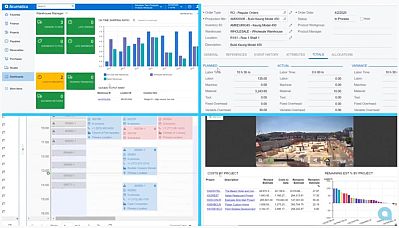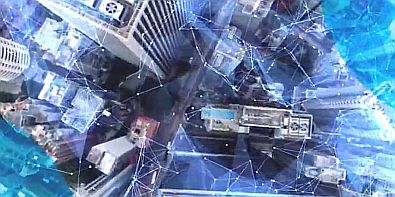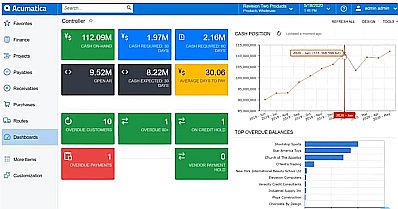What to Look for in a New ERP System
Your company's Enterprise Resource Planning (ERP) system can be the heart of your operation. It also represents the one application where you and your team will spend time every day to perform your jobs. So, how do you go about selecting the best ERP solution for your manufacturing company? What do you look for? The folks at Acumatica offer a guide.
Before you do anything, ask the question: "Why are we looking for a new ERP system?"

There are many reasons companies invest in a new ERP system. If you are using an older software system or you have outgrown your basic accounting software, you may be experiencing one or more of these difficulties:
- You and your team are always dealing with manual workarounds for simple tasks which can be easily automated.
- Much of your data is stored in Excel spreadsheets on multiple systems across the company.
- There are no automated workflows (such as approvals for purchase orders or AP processing).
- You are unable to easily modify the software to work with your company's processes.
- You are always facing a laborious month-end close process.
- Accruals, allocations, and deferred revenues are an issue.
- You lack the ability to manage multiple companies within one system and provide consolidated reporting.
These types of issues affect the productivity of your team and the company as a whole, and warrant investigating a modern solution.
So What Do You Look For?
The next step is to get more specific regarding the "what."
This means creating a list of requirements containing those essential features that must be in the new system. You will use this list to help potential software vendors understand your needs and help them prepare a demonstration of their software's ability to meet your requirements.
This means that you must take the time up front to be very clear on what you need. Get key stakeholders together to provide a thorough answer to this question. Don't take anything for granted; this is the time to look at your company with a critical eye and determine how a new ERP system can help you address your challenges and help you attain your goals.
Interview not just the financial team, but everyone who will be using the system -- from shipping and receiving to sales and marketing. Determine the features and functions that are necessary, those that would be nice to have, and those that will be required in near future.
Since the system will have to serve your needs today as well as tomorrow, look for a system -- and a company -- that will be around ten years from now. A system that is flexible, easy to use, and works with the way your company does business.
Cost
It is essential to look at a new ERP system as an investment. An ERP system is a 7- to 10-year (or more) commitment of time and resources and will be responsible for handling some of the most important aspects of the organization.
In addition to looking at the cost of licensing and implementation, look also at the tangible benefits your company will receive from a new ERP system in terms of ROI: More accuracy, less person-hours, less fraud and waste, better regulatory compliance, better reporting with real-time data and at-a-glance dashboards, and more proactive analysis for strategic decision-making.

In addition to the cost of the software itself, most ERP vendors will charge a fee for every user of the system. Software vendors usually charge more for users that require access to the system as part of their work compared to "light" users, who only require occasional access for minor tasks, such as price look ups or to enter time and expenses.
Users' licenses are either assigned to specific users (named users) or the license is based on the total number of users who can access the system at the same time (concurrent users). Acumatica offers consumption-based pricing that does not charge per user, but by the resources consumed to operate the system (hardware, memory, data throughput, etc.).
Think of the productivity if everyone inside your organization had access to the real-time information they needed to perform their jobs -- the same information you use to perform yours.
The ERP Buying Process
So, how do you go about researching, selecting, and buying your next ERP? The following process outlines the steps that will help you through the buying cycle.
Identify the Need
Document your need to move to a new system. Include the costs to maintain the outdated system as well as the budget to implement and maintain the new system. Next estimate the cost savings expected through streamlined processes and worker productivity. There are ROI and TC0 tools available to help in determining the costs and savings.

Get Buy-in at all Levels
You don't just need executive management to agree to spend the money; you also need buy-in from the individuals who will be using the system.
Gather Requirements
List the features and functions necessary for your company to move forward. Ask all potential users for their input. This will not only help you capture all requirements, but it will also help with user buy-in and adoption because they are part of the process.
In addition, separate the required features from "nice-to-have" features, and keep an eye on the future: What other functionality do you anticipate needing in the next three to five years and beyond? The last thing you want to do is invest in a software product that becomes obsolete before it delivers ROI.
Start a List of Potential Vendors
Identify the ERP vendors that provide a product that meets your requirements. Most ERP products provide the same base functionality, but you will find some are more suited to your company or your industry than others. Begin to narrow your list to those vendors that fit your needs the best. You will also want to identify whether you want a cloud-only product or an on-premises product.

Make Your Proposal
Contact the vendors who have made it to your short list and request an on-site meeting and demonstration of their software. Be sure to share your requirements with them and request that each requirement be shown in the software demonstration.
Manage the Demo
There is always a tendency for the demo team to show the features and functions that depict their software in the best light. Don't let that distract you from why you asked for the demonstration: Make sure each of your requirements are demonstrated to you and your team to your satisfaction. For example, if you asked for ease in customizing reports, have that demonstrated. Have your staff perform some of the actions themselves so they feel comfortable using that feature.
Have Your Own Implementation Team
The software vendor will provide a team of specialists to help you migrate your data, implement and tune the system, and train your staff. However, you need to have your own dedicated team from your company to assist with the process, provide access to secure areas and systems, and help work through any problems that might occur.
Be Open to Business Process Analysis/Improvement
Some implementation teams will require an assessment of your business processes before proposing a system for you. Be open to this idea, even if it adds to the overall cost of the system. The team will analyze your existing processes and recommend changes that will help streamline some of your company's wasteful processes and make your staff be more productive.
Want more information? Click below.
Rate this article
View our terms of use and privacy policy ::m::